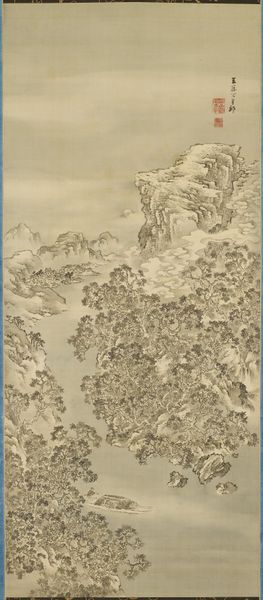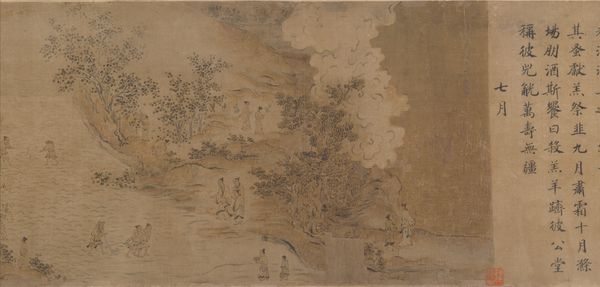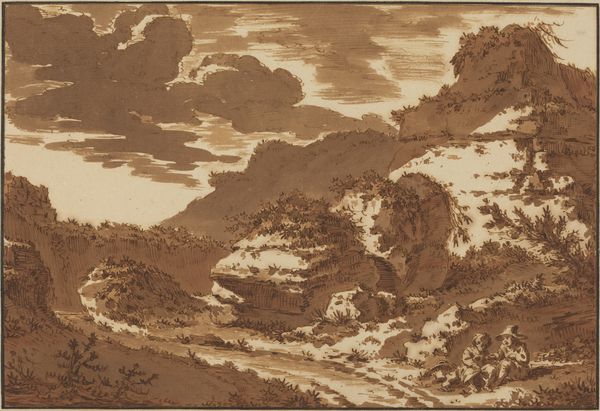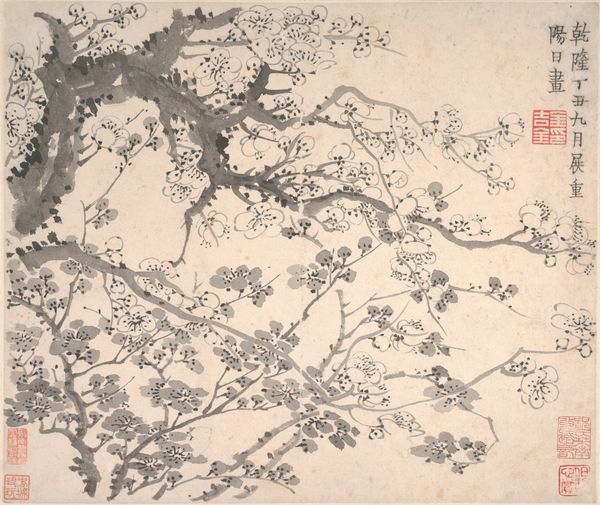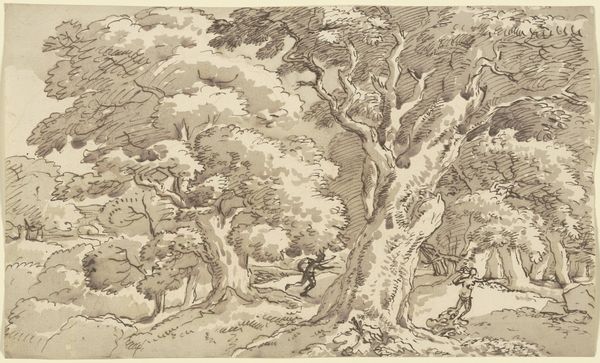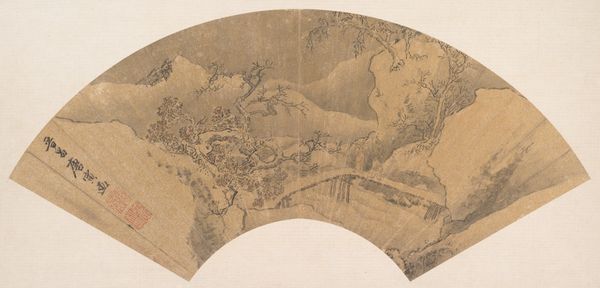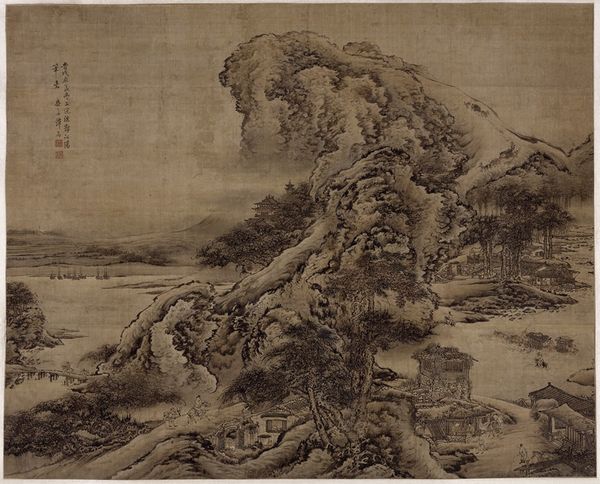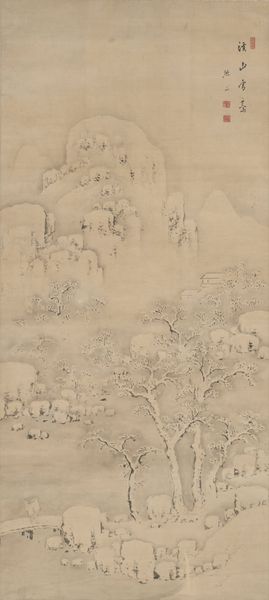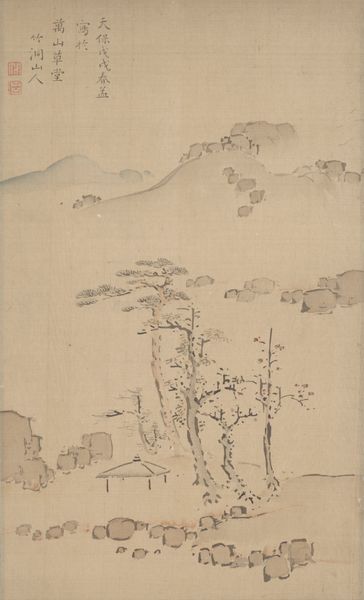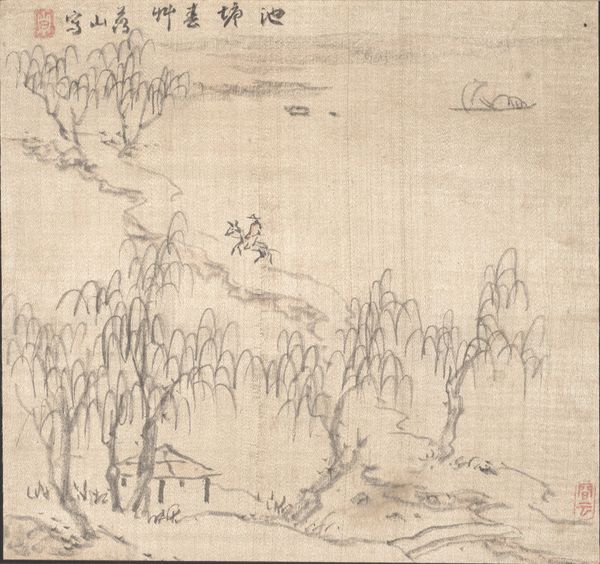
drawing, ink
#
drawing
#
ink painting
#
asian-art
#
landscape
#
form
#
ink
#
realism
Dimensions: 47 3/8 x 87 in. (120.33 x 220.98 cm) (image)
Copyright: Public Domain
Editor: So, here we have “Deer By Stormy Sea,” an ink drawing from around 1670. The artist’s name is Ma Futu. I’m immediately struck by the contrast. You have these almost delicate deer set against the ferocity of the storm. What do you make of that juxtaposition? Curator: It speaks volumes, doesn't it? The deer, often symbols of longevity and tranquility in East Asian art, are placed precariously on the edge, dwarfed by the overwhelming power of the storm-tossed sea. Do you see how the artist uses ink wash to create a sense of atmospheric perspective? The distant waves almost dissolve into the mist. Editor: Yes, and the way the pine tree’s branches are bent by the wind, it feels like everything’s being tested, including those serene deer. It almost feels like the deer, a symbol of peace are knowingly facing turmoil, almost reflecting on the nature of enduring hardship, facing their anxieties almost. What's the tree symbolizing, by the way? Curator: That’s an astute observation. The pine, like the deer, is another emblem of resilience. Both endure hardship but the deer look upon and accept the circumstances without action, as if it can be contemplated into solution, rather than charging head-first. The deliberate arrangement subtly guides our gaze, inviting introspection on weathering life's storms. Do you think this work evokes something culturally in you? Editor: I hadn’t thought about that, but it does create a space for contemplation! I guess that resonates with traditional values I’m familiar with but never fully understood. I can imagine viewers reflecting on their place in the world and their ability to remain grounded despite difficulties. Thanks, Curator. Curator: The interplay of nature and symbolism reveals a deep cultural narrative. The work echoes ancestral wisdom and personal understanding, as nature unfolds life itself. The emotional strength within the drawing shows how Ma Futu explored ideas around cultural stability during great adversity.
Comments
minneapolisinstituteofart almost 2 years ago
⋮
Born in Shandong province, Ma Futu passed his Ju Ren (bachelor) degree but, there is no record that he held government office. Almost all of his extant paintings, like the present work, were executed in large part with the tips or nails of his fingers as well as with the brush. Finger painting was revitalized by the Shunzhi emperor (r. 1644-1661) helping make it fashionable during early Qing. The subjects of Ma's paintings generally lend themselves to the expressionistic finger painting technique. The deer and pines of the present work are standard Daoist emblems of longevity and scholarly aspirations. The rolling waves and wind symbolize the forces of the universe and often serve as vehicles for Buddhist and Daoist immortals.The inscription reads:"Finger-painted by Ma Futu."
Join the conversation
Join millions of artists and users on Artera today and experience the ultimate creative platform.
